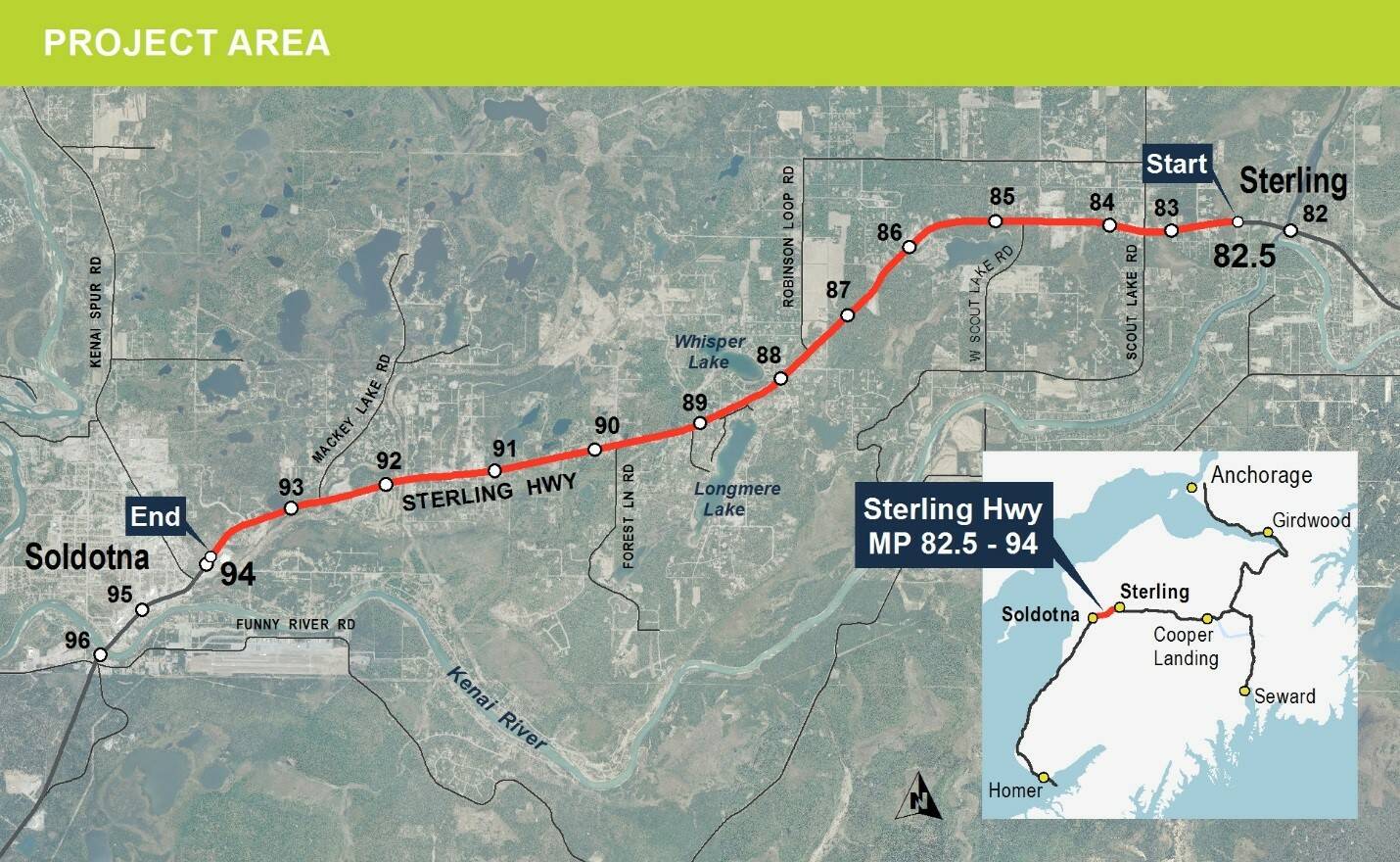The Alaska Department of Transportation and Public Facilities said Monday it is working with business owners along the Sterling Highway to minimize the impact proposed changes aimed at improving highway safety would have on their businesses.
A stretch of about 11.5 miles of the Sterling Highway between Sterling and Soldotna — or between Mile 82.5 and 94 — was found eligible for designation by the State of Alaska as a Traffic Safety Corridor in a 2008 safety study of the highway corridor. In general terms, that stretch of road is from Fred Meyer to the bridge over the Moose River.
Among the factors considered for the designation include the rate of fatal and major traffic incidents per mile. The state’s threshold for that rate is 0.857, while the actual rate of that segment of the highway is 1.777.
Traffic volumes along the corridor increased by more than 400% between 1977 and 2006. Though the number of fatal accidents did not increase significantly during that time, the rate of fatal accidents was still about 239% higher than the national rate in 2004. The corridor’s total accident rates are also “mostly above” those of statewide averages.
State data also show that the corridor’s average daily traffic volume increases during the summer season, according to the report.
“These high numbers of vehicles exceed the capacity of a two lane rural highway … increasing delay and driver frustration,” the report says. “This can lead to drivers who are in a hurry taking more chances and passing in no passing zones when approaching and passing slower traffic.”
Among the mitigation options put forth in the safety report are a widening of the highway, the installation of moose fencing or the creation of a no-passing zone.
Widening of the highway to create a four-lane divided facility with a depressed median, the mitigation plan DOT plans to move forward with, is also described.
The benefits of that project, the report said, would be seen in the physical separation between traffic moving in different directions, expanded roadway capacity, opportunities for passing and fewer opportunities for left turns.
Some business owners, however, are concerned about how the state’s vision of the corridor will limit access to the highway.
Vean Noble, who owns Noble Car Wash on the Sterling Highway, says the project will restrict access to the highway by making it difficult for vehicles to get from side streets to the opposite side of the highway via median breaks.
“That doesn’t sound very safe to me,” Noble said.
While efforts to improve safety along the highway are “a worthy goal,” Noble said, he questions whether or not the project as presented is the best way to go about it.
He voiced specific worries about whether the turn radii at median breaks will be able to accommodate some of the highway’s larger travelers — such as RVs and school buses — and whether having multiple lanes will increase the speed of traffic. RVs and campers, he noted, make up a big chunk of his customers and Noble Car Wash.
Project Manager Kelly Summers said Monday that DOT&PF are working with business owners to make sure they’re given a voice as the project continues, especially in the design phase. That phase, Summers said, is the next stop in the process.
She said some state employees have already visited businesses that would be affected by the project and connected with community members at a public meeting held Sept. 8 at the Soldotna Public Library.
To help mitigate the impacts a divided median would have on surrounding properties, Summers said DOT&PF is considering the creation of frontage roads along the highway, improvements to existing roads around the highway and the installation of median breaks every half mile.
Regarding concerns about the size of certain vehicles, Summers said a standard DOT&PF turn radius will accommodate a 62-foot wheel base, meaning vehicles that have 62 feet between their axles.
Some of the larger vehicles that use the road, however, can have wheel bases of more than 100 feet, which Summers said the department intends to factor into design plans.
The timeline of the project was pushed back after DOT&PF pivoted to seeking federal, as opposed to state, funding for the project, citing “the state’s current economic climate.” Construction is not expected to begin until 2026.
DOT&PF expects the State of Alaska will contribute about 9% of the project funding, which is estimated to be about $76.4 million including design, right-of-way acquisition, utility relocation and project construction.
More information about the project can be found at sterlinghighway82to94.com.
Reach reporter Ashlyn O’Hara at ashlyn.ohara@peninsulaclarion.com.

